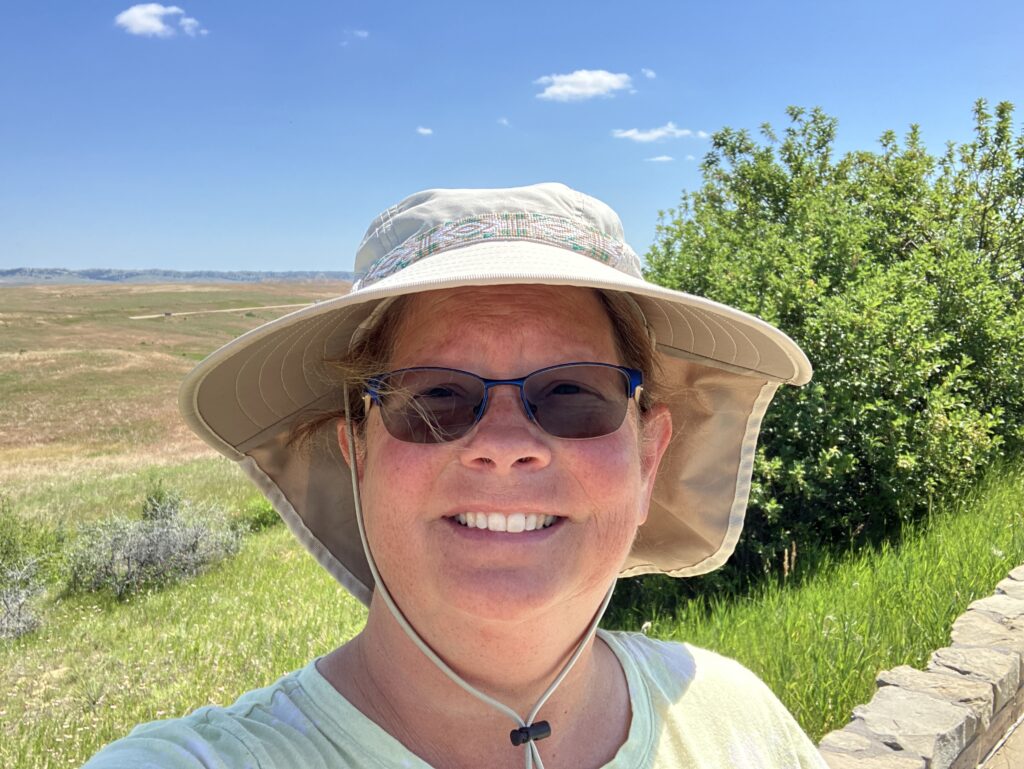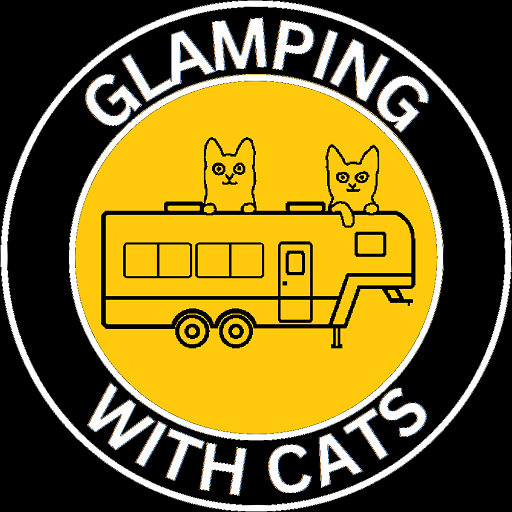Garryowen, MT, July 2025
So we are staying in the middle of nowhere, Montana near a (small? tiny? puny?) private town name Garryowen. Wikipedia and the 2010 Census claim that the population is 2. The building in town is a combination of the city hall, museum, and convenience store. We have not been there, so we can neither confirm nor deny this claim. More recent census reports claim 462 residents in the Garryowen zip code. We are not sure if that is the current town population or just population in the area. And here is a completely unrelated joke for you.
Why did the Kate cross the interstate?
To get to the other cancel stamp 🥁🥁🥁
I bet you will never guess why we are staying in the middle of nowhere for a week. If you thought cancel stamps, you read my mind (or the joke above). The Burgess Junction Visitor Center in Bighorn National Forest and the Little Bighorn Battlefield National Monument have cancel stamps.
Today’s journey was to the battlefield monument. After backing her car out, Kate’s car started binging about low tire pressure. Low and behold, there was a nail in the back passenger tire. After pulling out a tire plug kit and calling around, we decided to take the tire in for professional repaired on Monday to avoid a $50 emergency repair fee today. After deciding this, we moved our stuff to the truck and drove to the battlefield about two hours late. (Spoiler Alert: General Custer lost!)
While Kate was getting cancel stamps and stealthily purchasing post cards, John photographed the flowers.
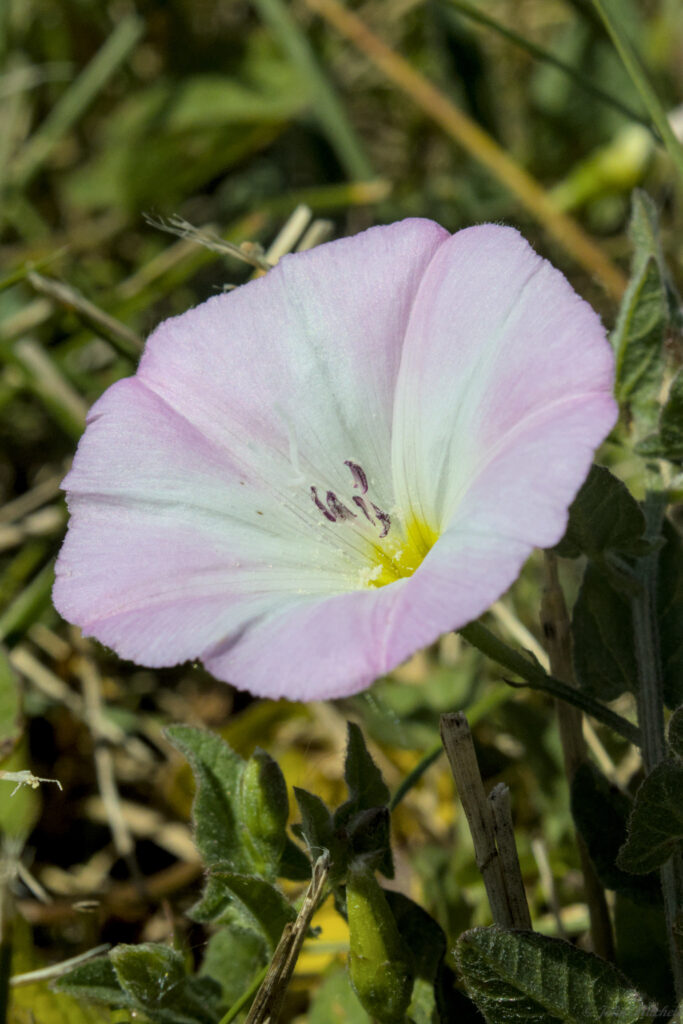
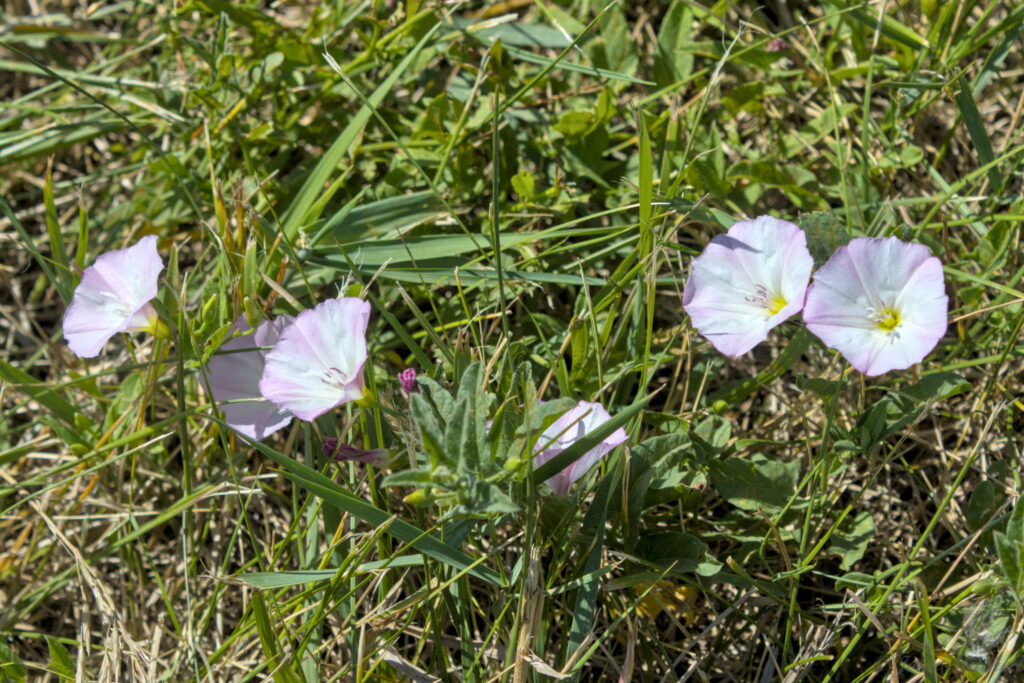
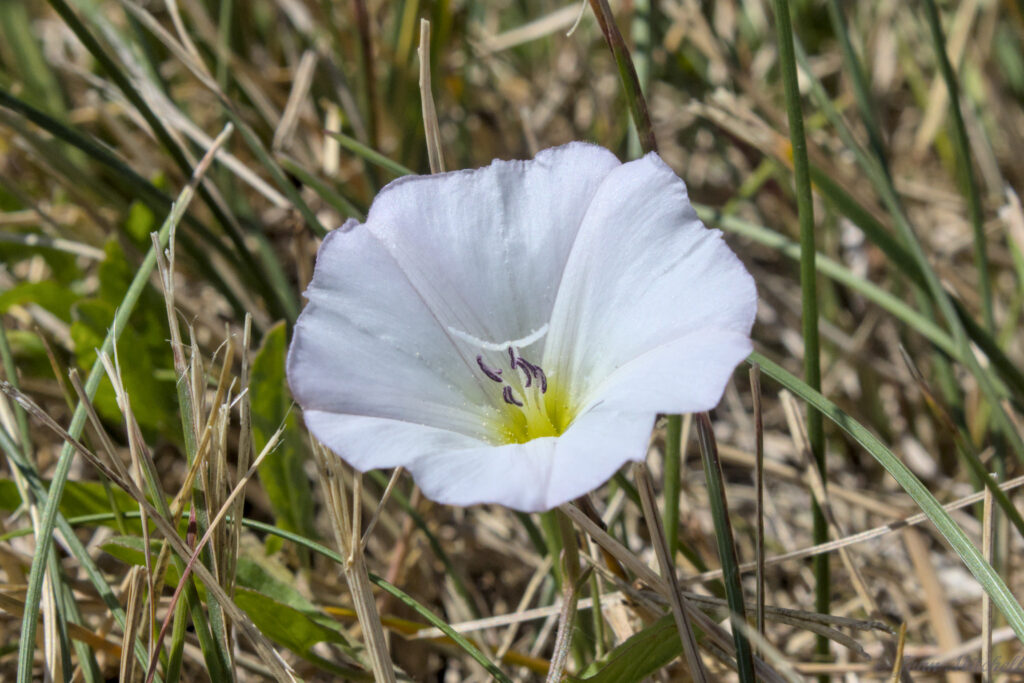
After the cancel stamps, Kate read and photographed the history of the cemetery, while John photographed the markers. The cemetery was not used for the solders that fell in the Battle of Little Bighorn. Those soldiers are (mostly) buried at the monument. This cemetery has soldiers from the era of the Indian Wars, Spanish American War, World War I, World War II, Korean War, Vietnam War. The cemetery has been filled and is no longer accepting new … occupants?
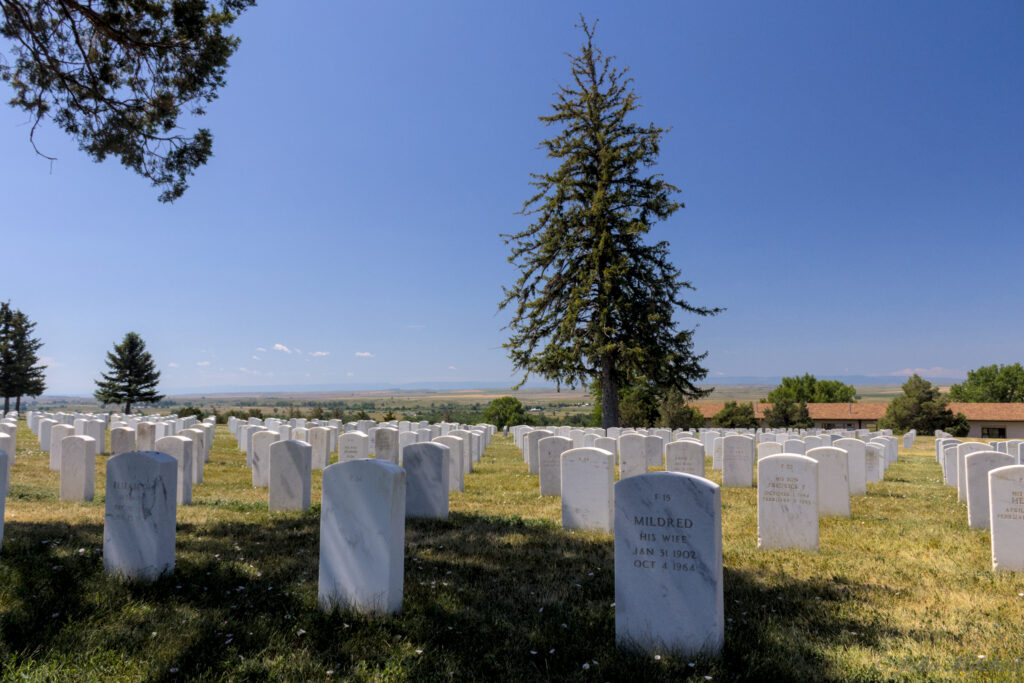
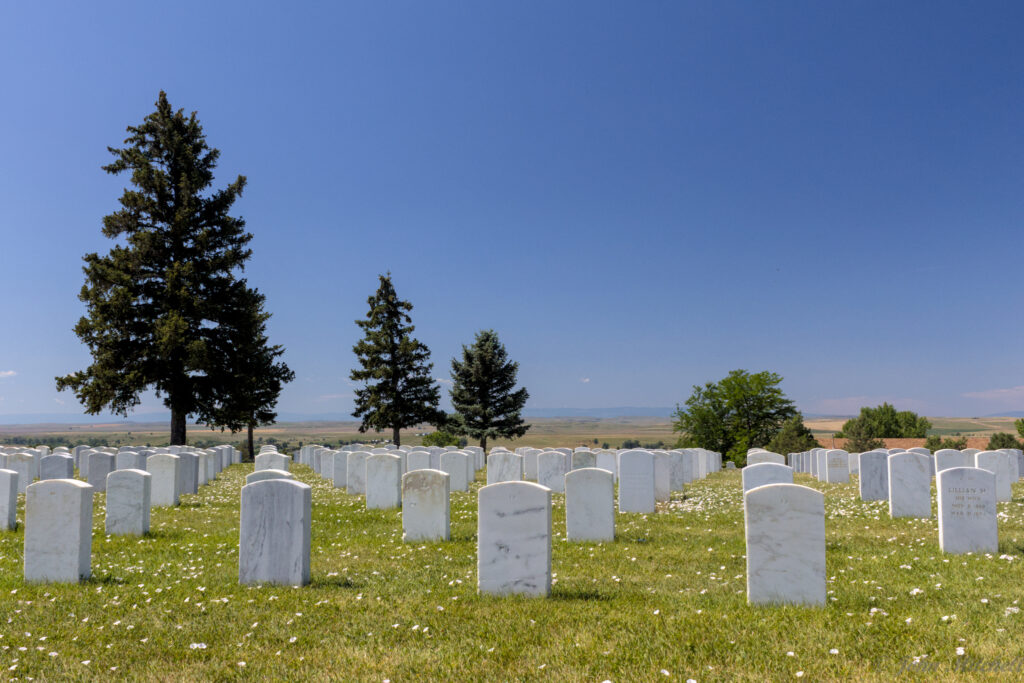
Below are the information signs and monuments about the cemetery. Notice that the first board indicates that 350 solders were fighting 5 miles away and did not die in the fight.
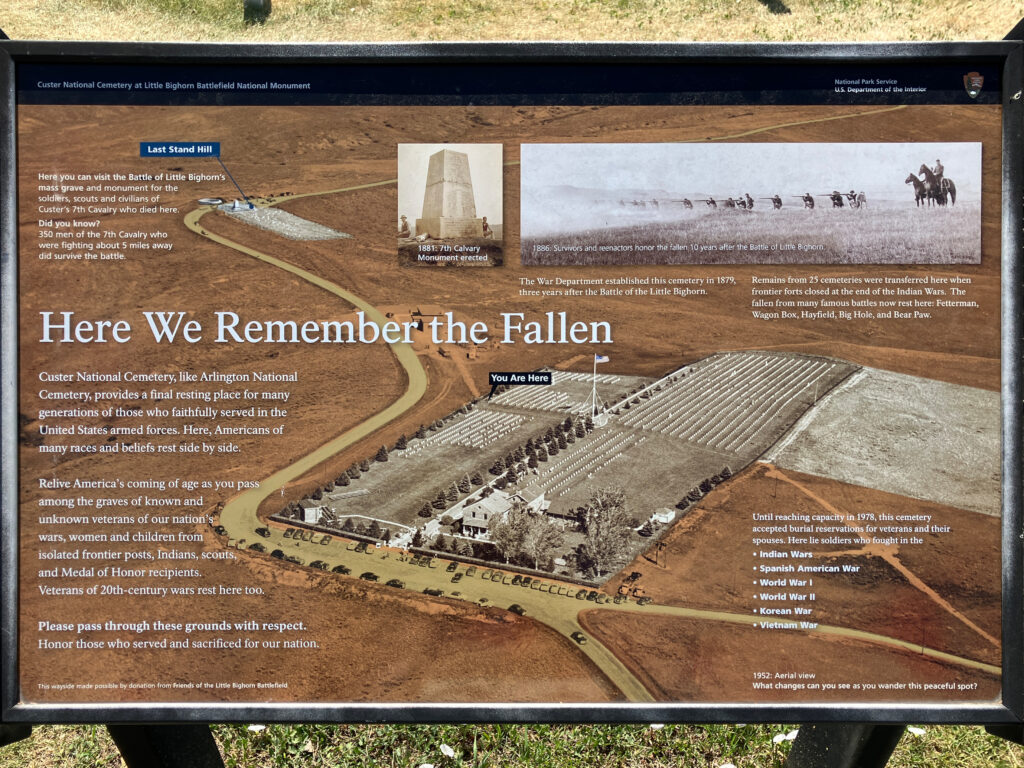
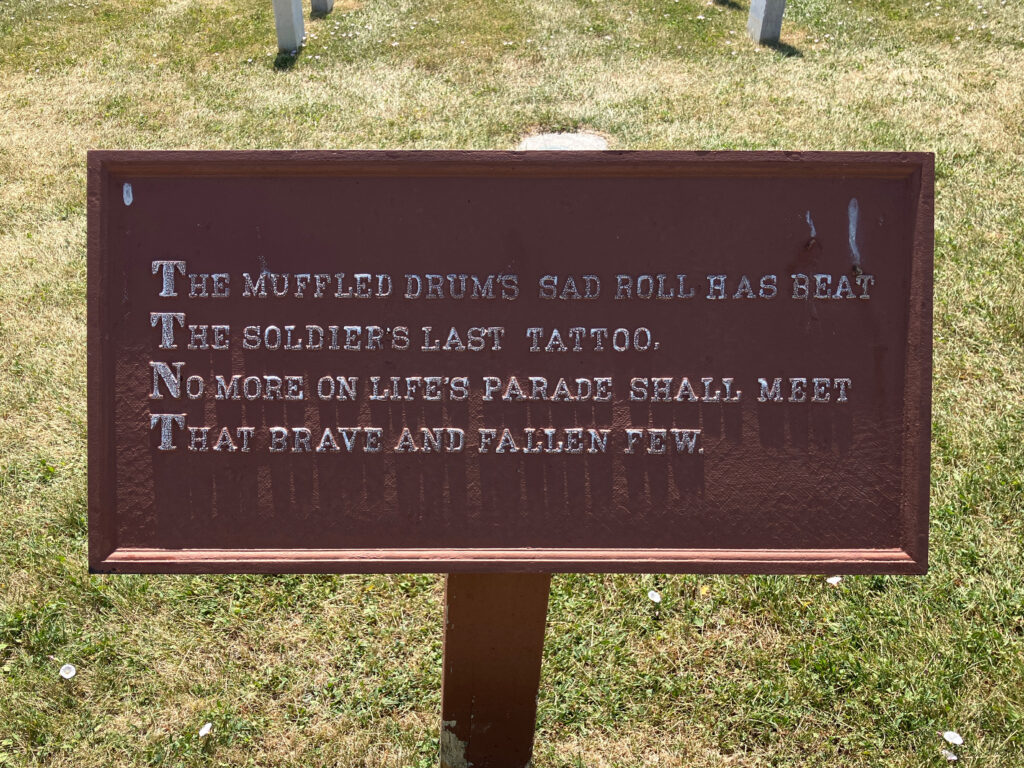
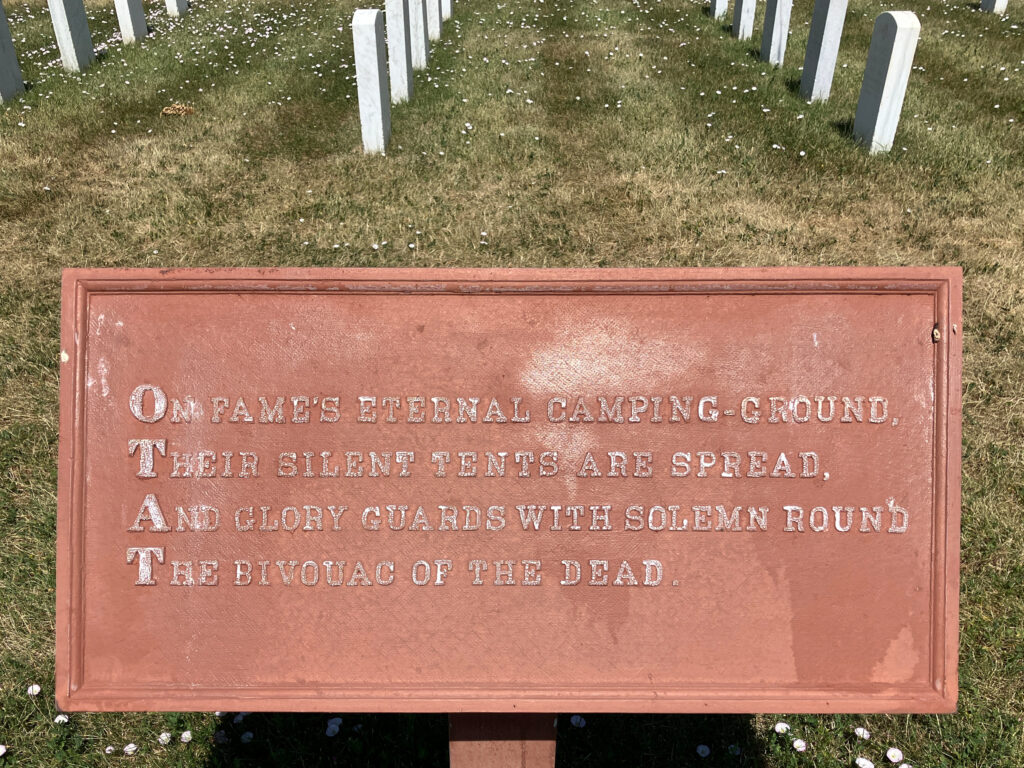
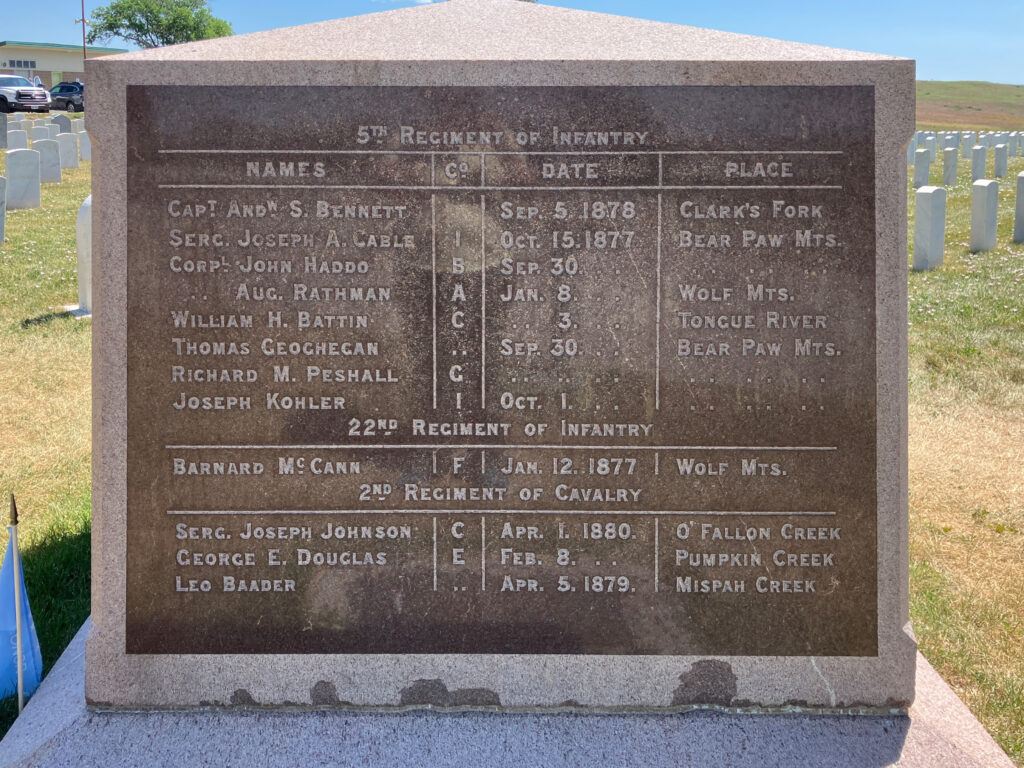
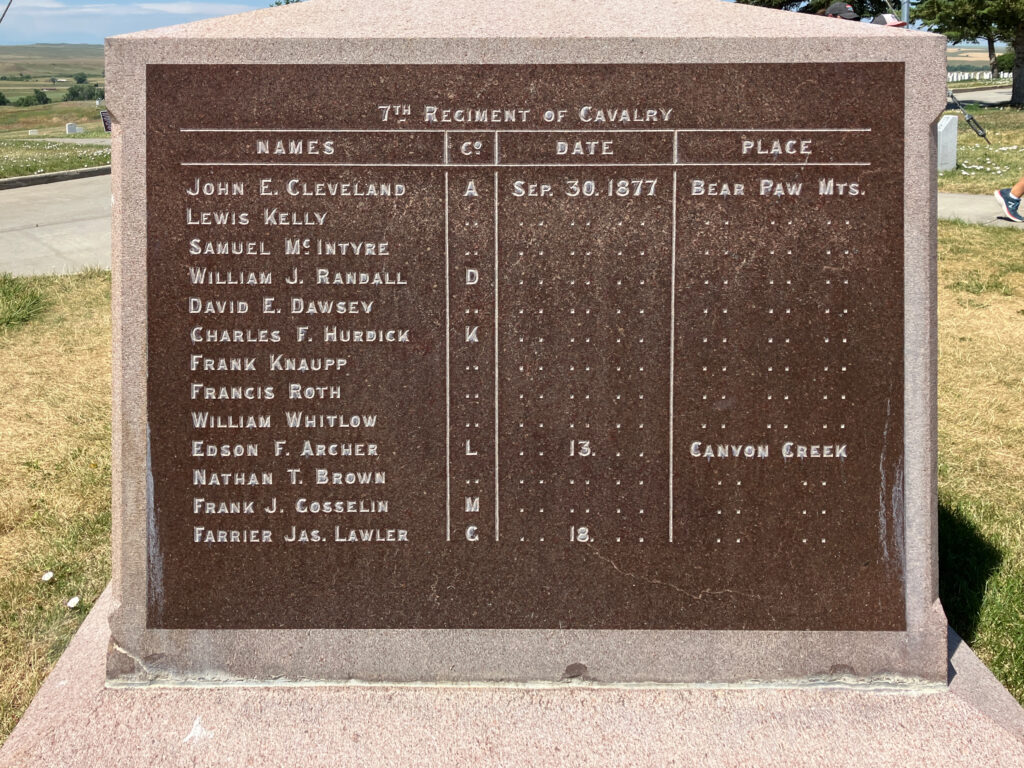
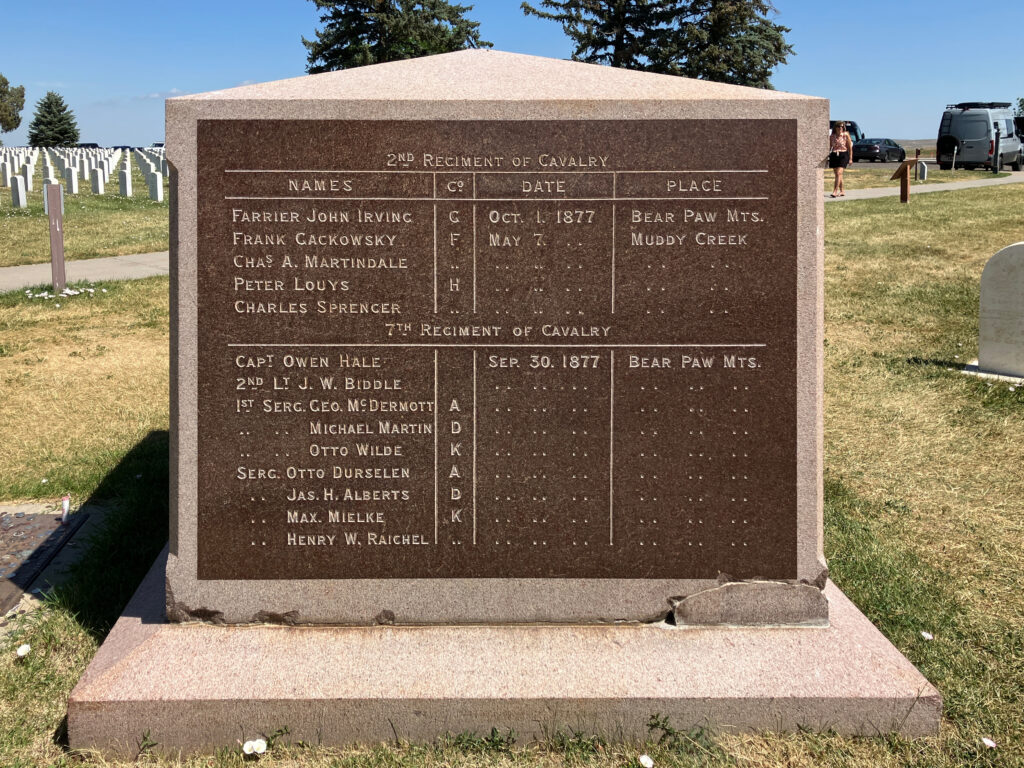
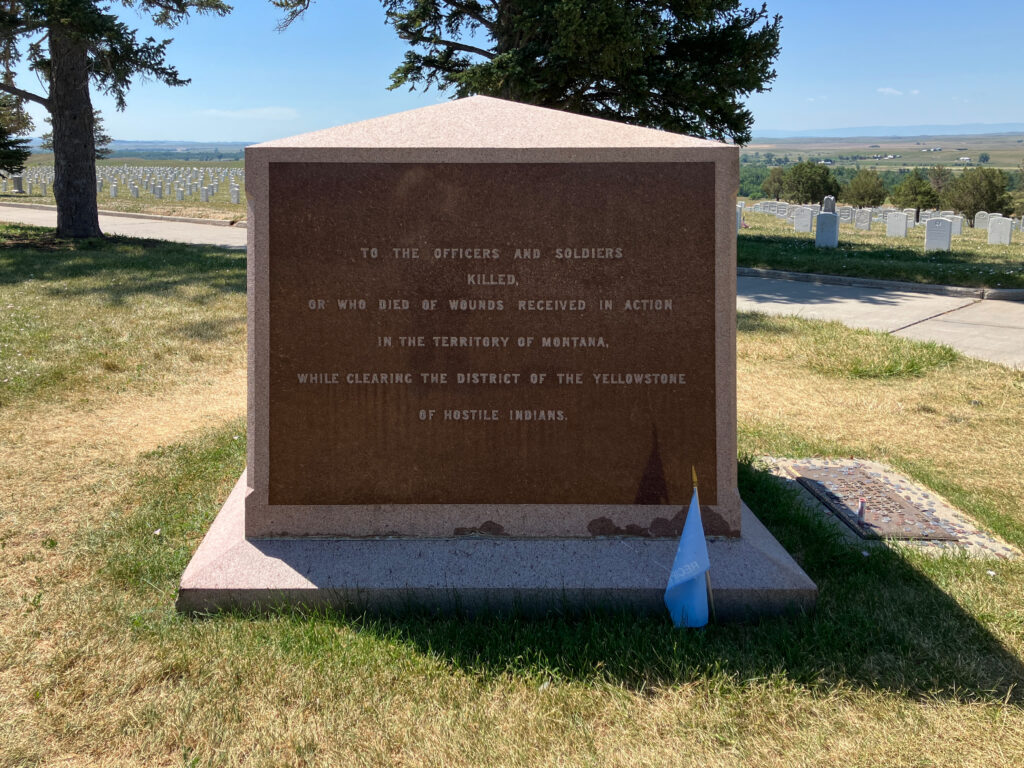
According to Montana.gov, coins are placed on markers. The purpose is to let the family know that you visited. A penny means that you visited. A nickle means that you went to boot camp together. A dime means that you served together. A quarter means that you were there when the person died. Looking at the next picture where the person passed away in 1877, we highly doubt that the coins align with Montana.gov site. We feel like folks did not know the full meaning and thought they were leaving a donation. (People, this is not a wishing well!) Now that Kate knows the meaning, Kate would have left pennies on sites.
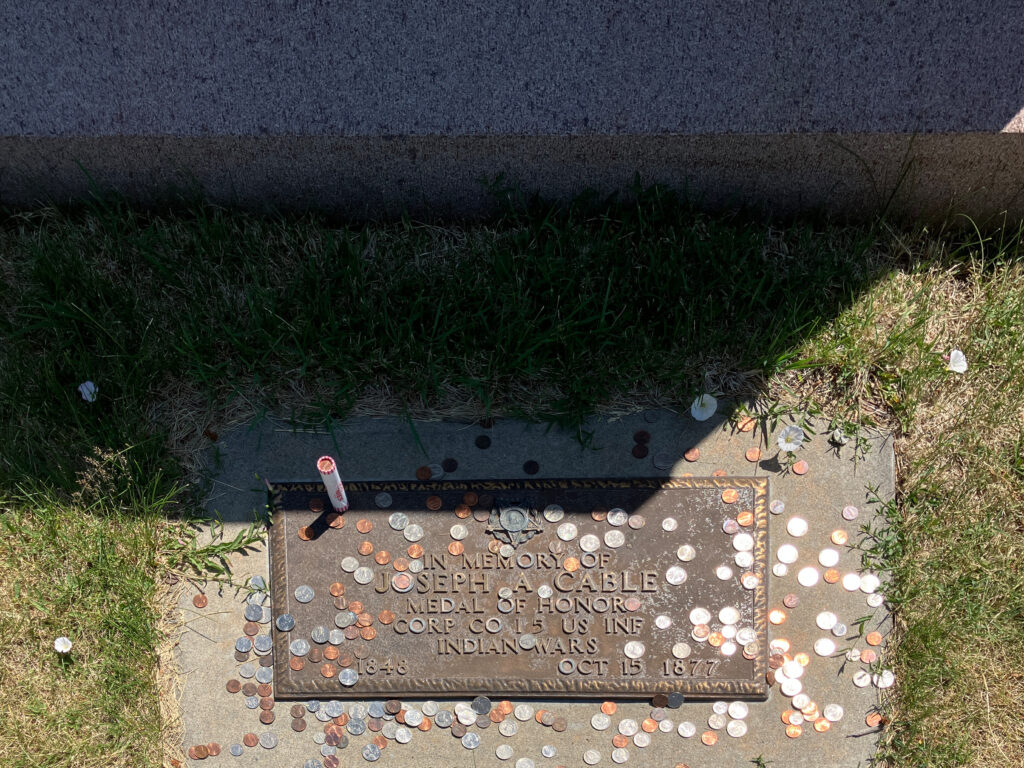
The building was next to the cemetery, but there were no markers indicating the buildings purpose. If you look at the first sign above, this might be the same building on the old picture.
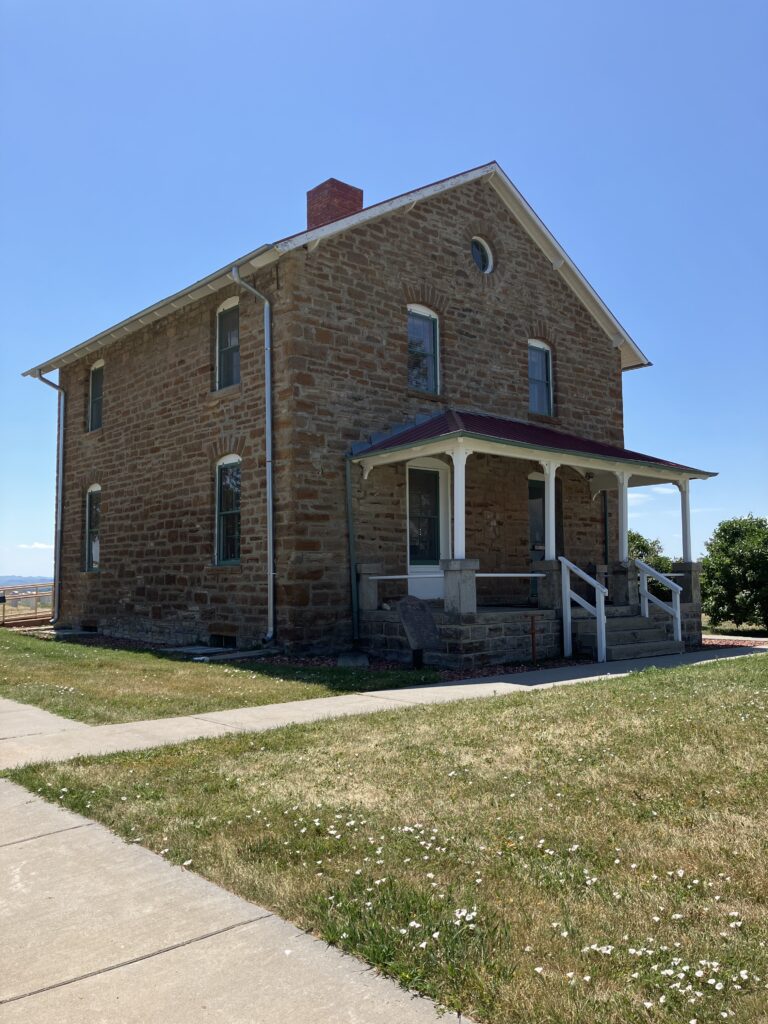
We walked up to the European American and Native American monuments to the battle. The military monument was a short obelisk with the names of the officers, soldiers, and civilians that died in the battle. The grave markers in the fields indicate where some of the solders remains were found.
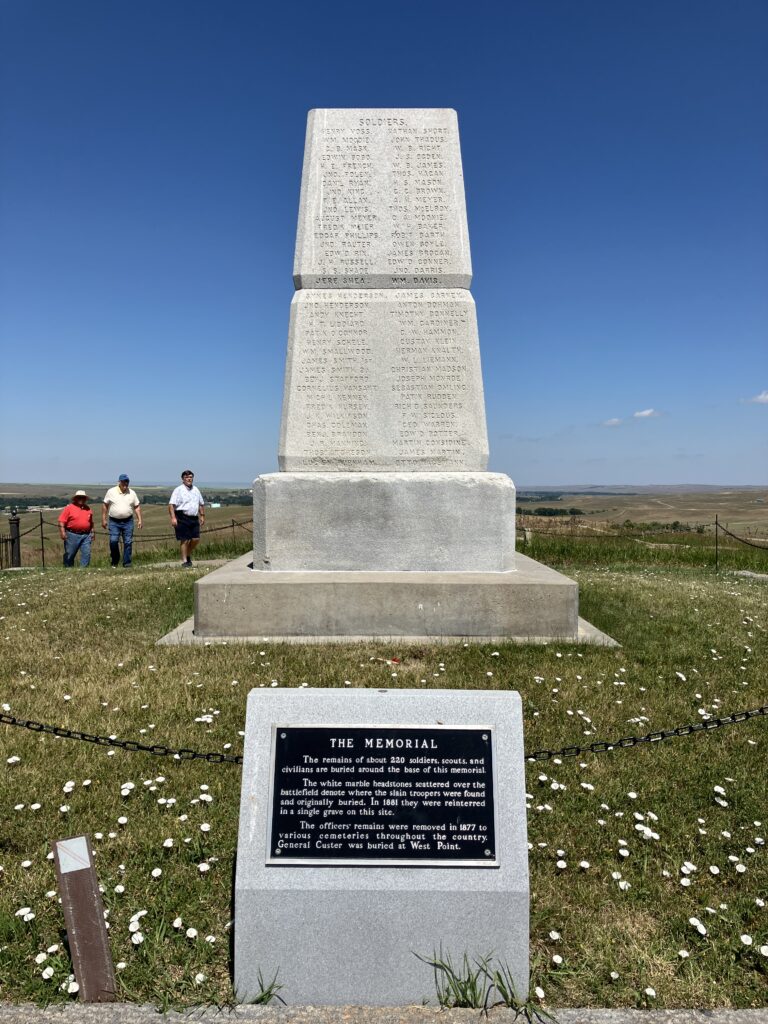
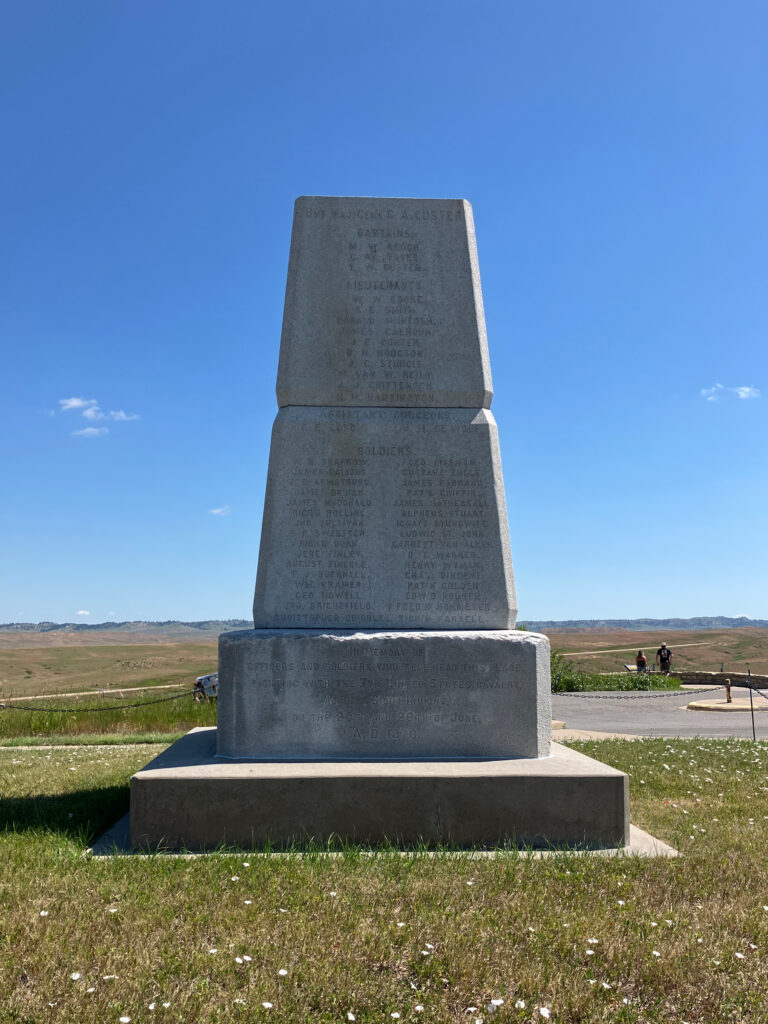
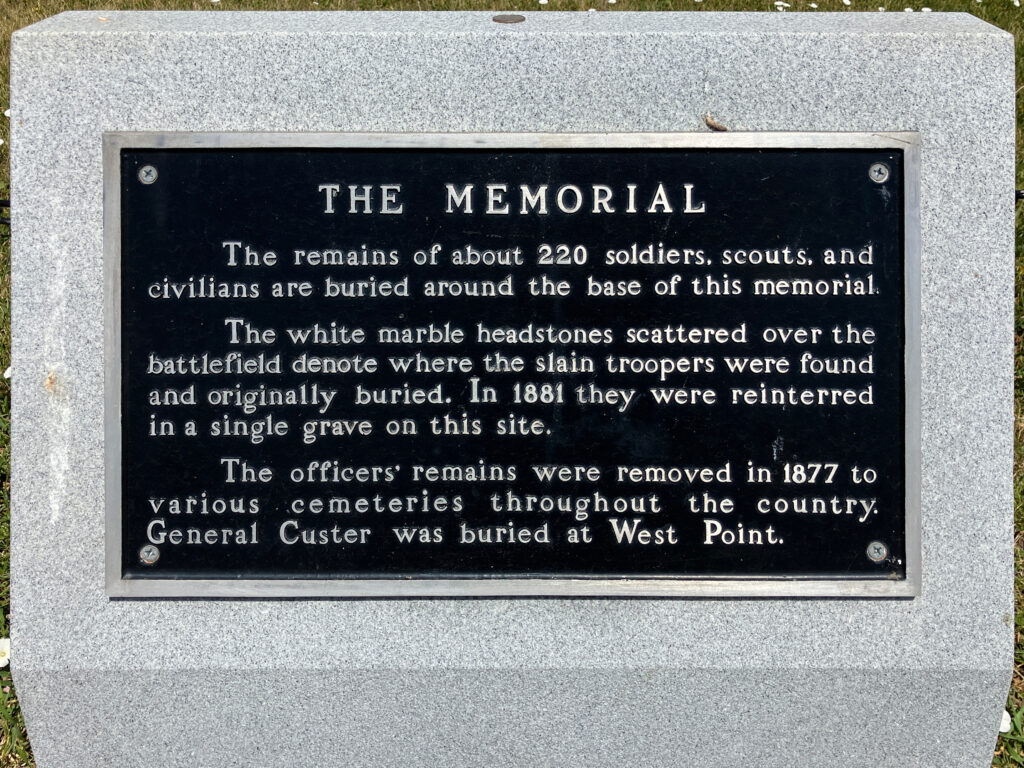
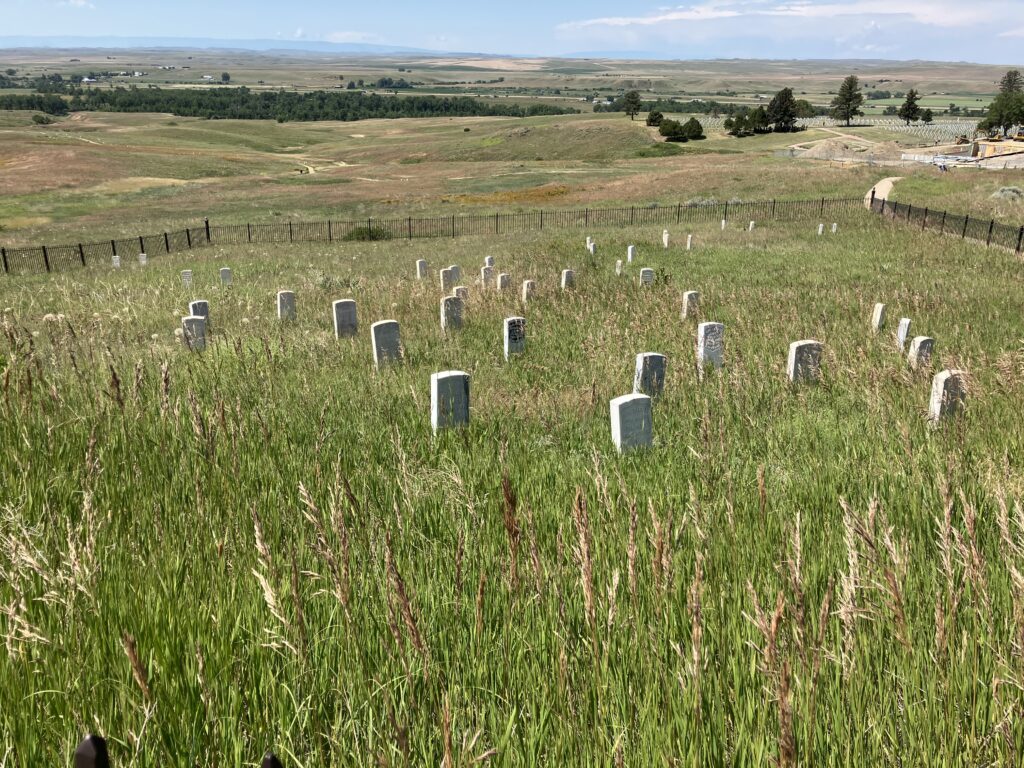
The native monument was build into a small mound. It is more like a circular version of the Vietnam Veterans Memorial wall with names of the fallen, quotes, and historical information. It also had a wire frame sculpture in the shape of natives preparing for and heading to war. Similar to the medicine wheel, the sculpture had tokens, herb bags, and medicine bags tied to it.
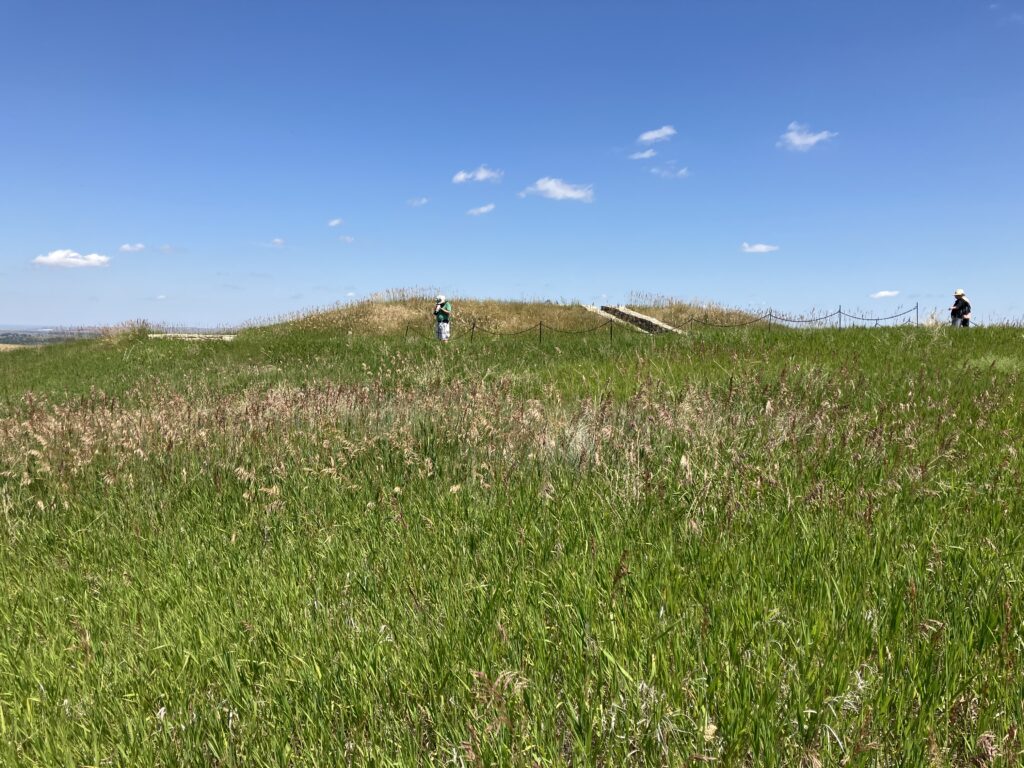
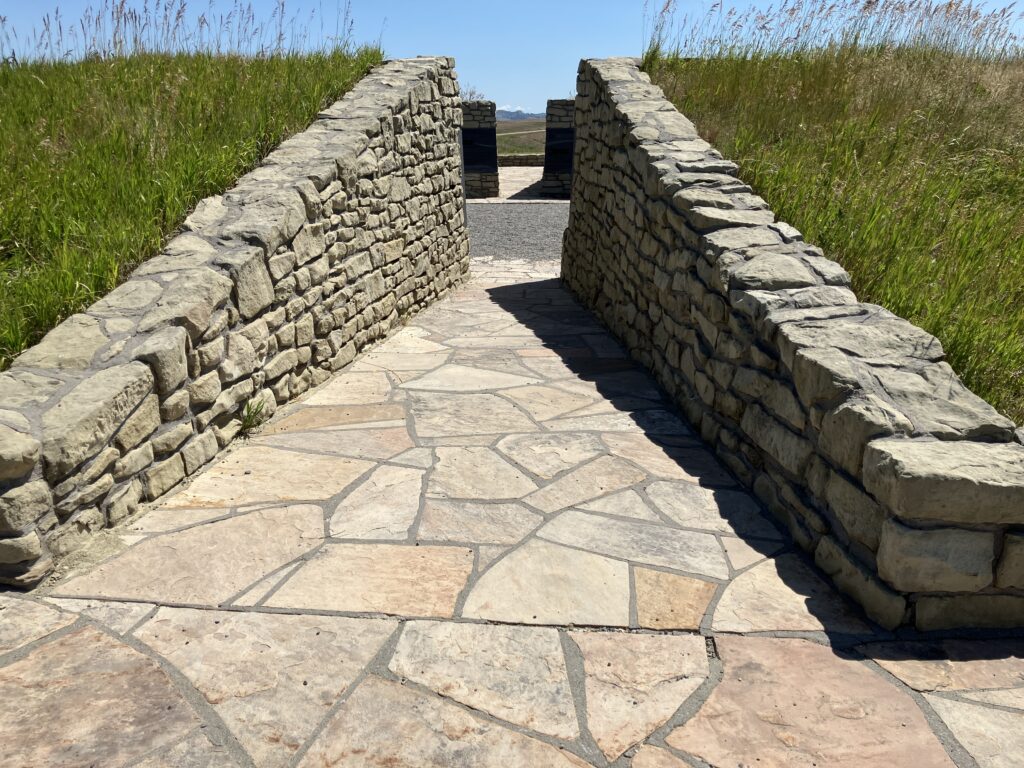
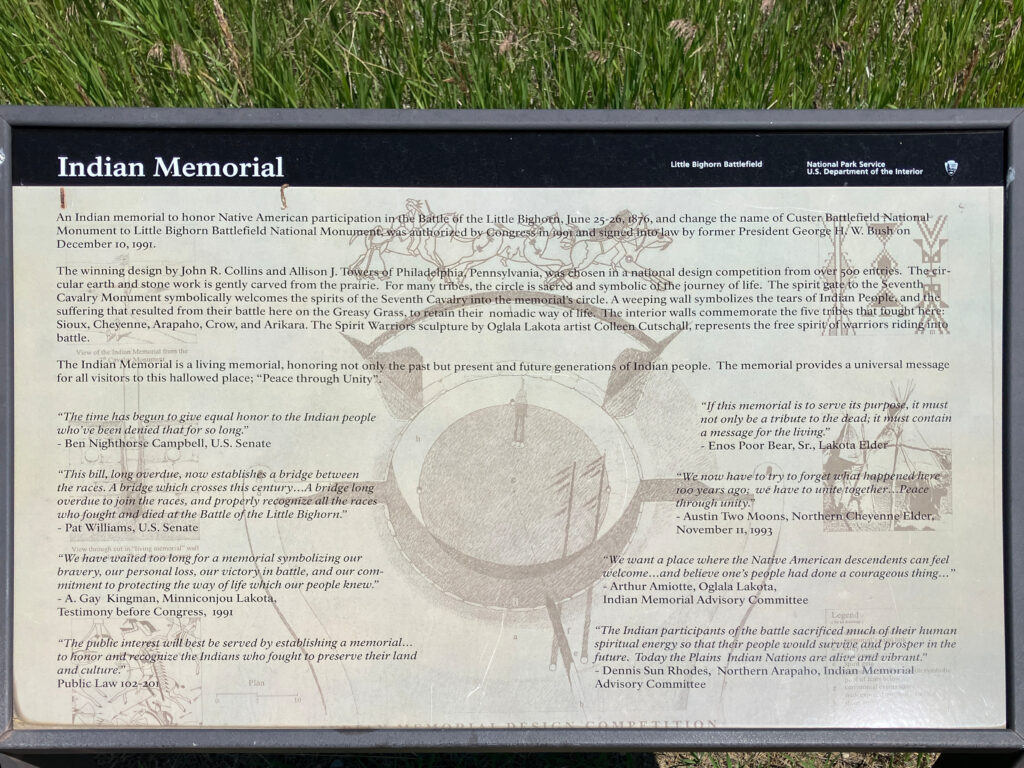
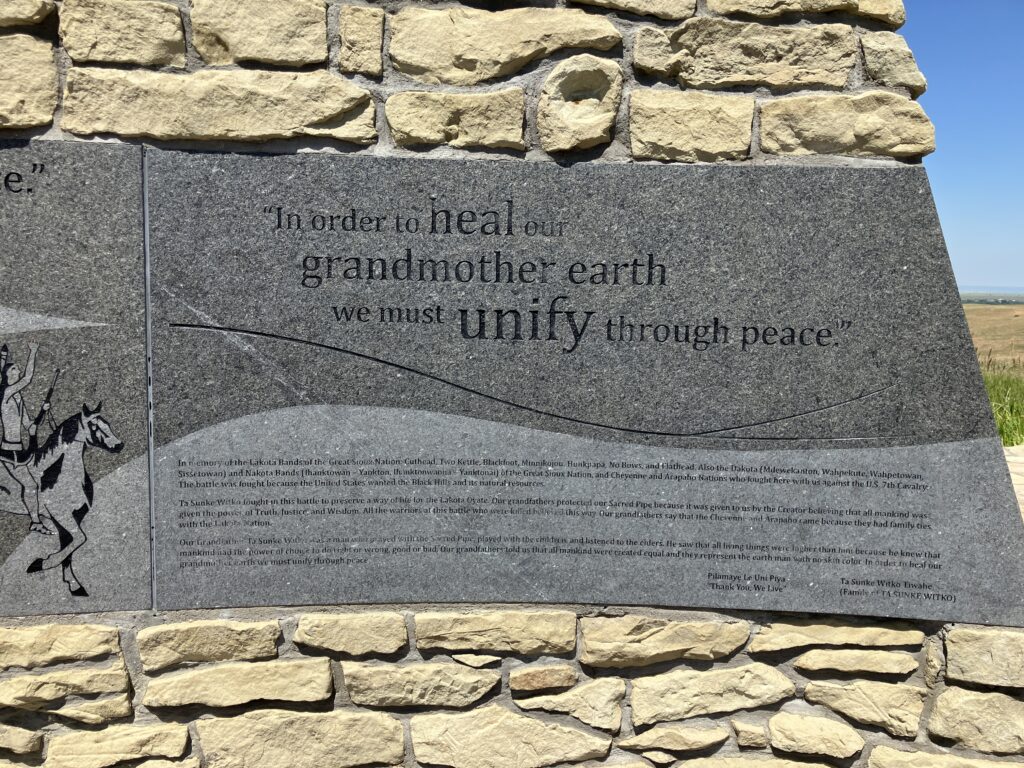
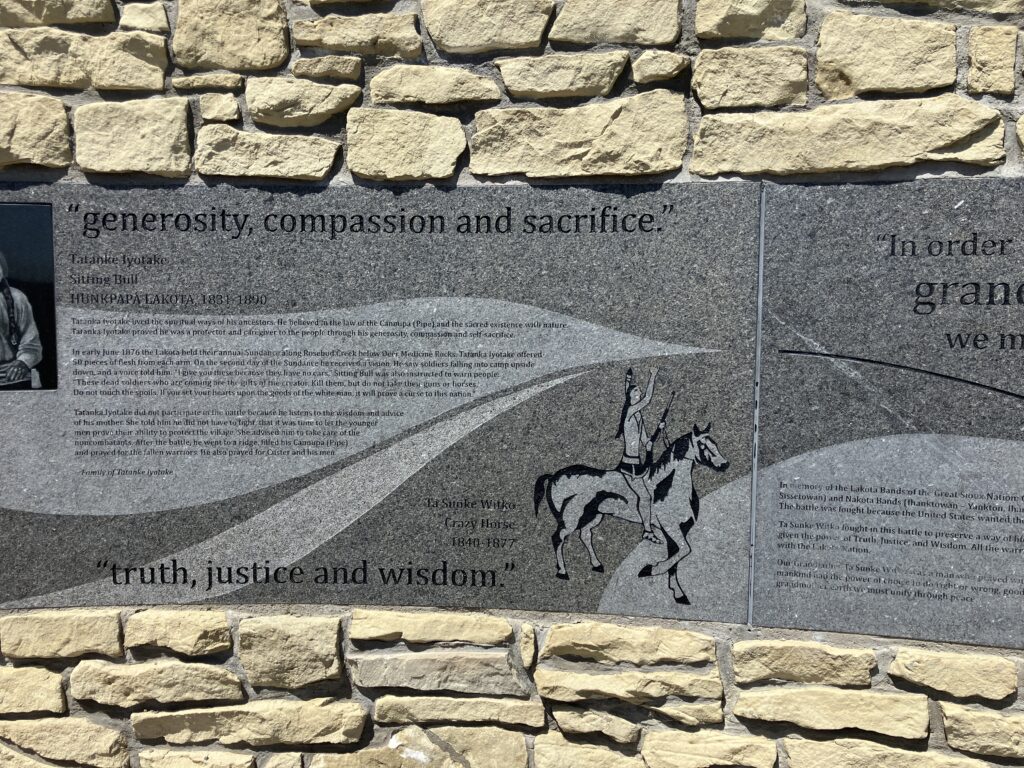

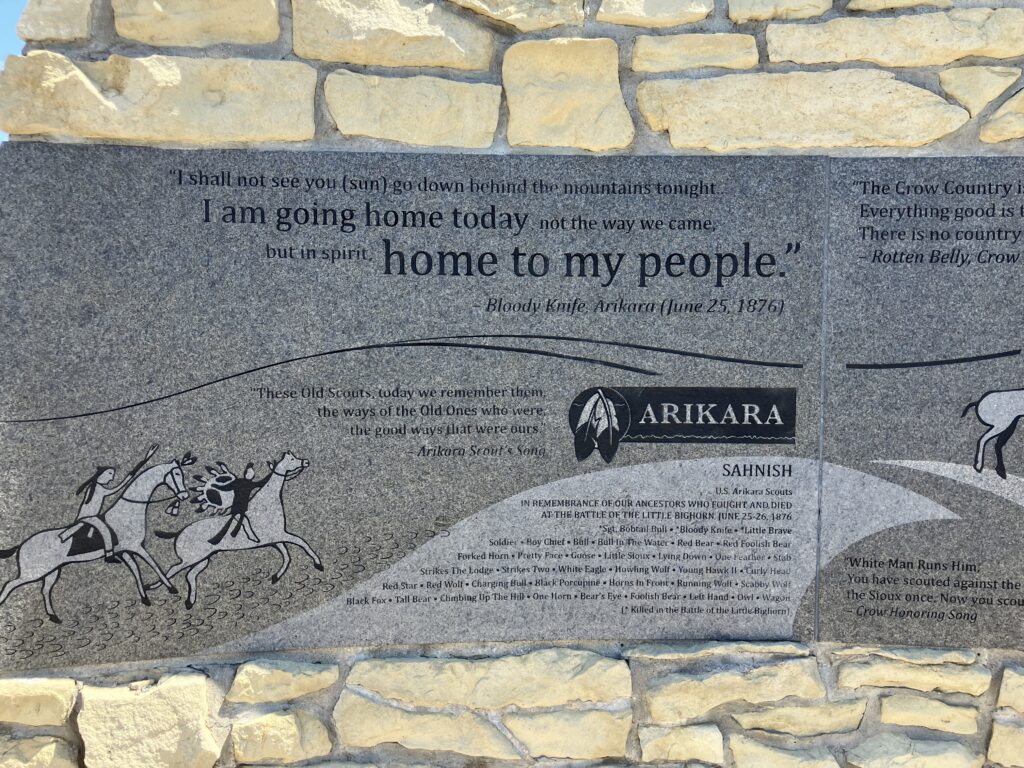
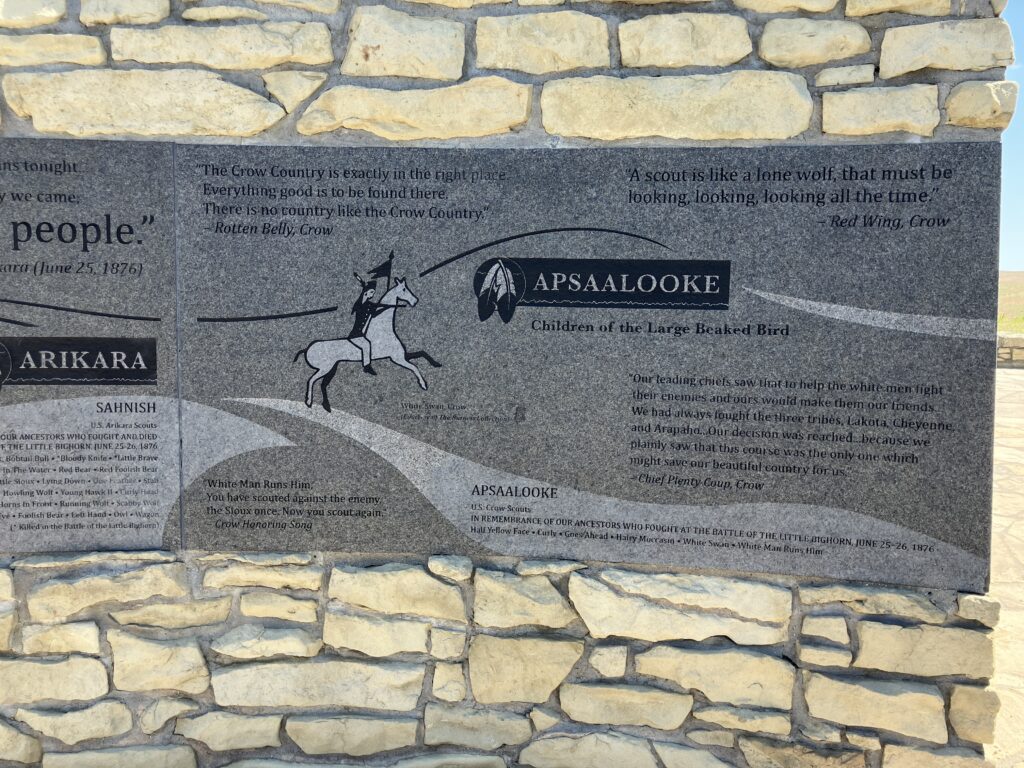
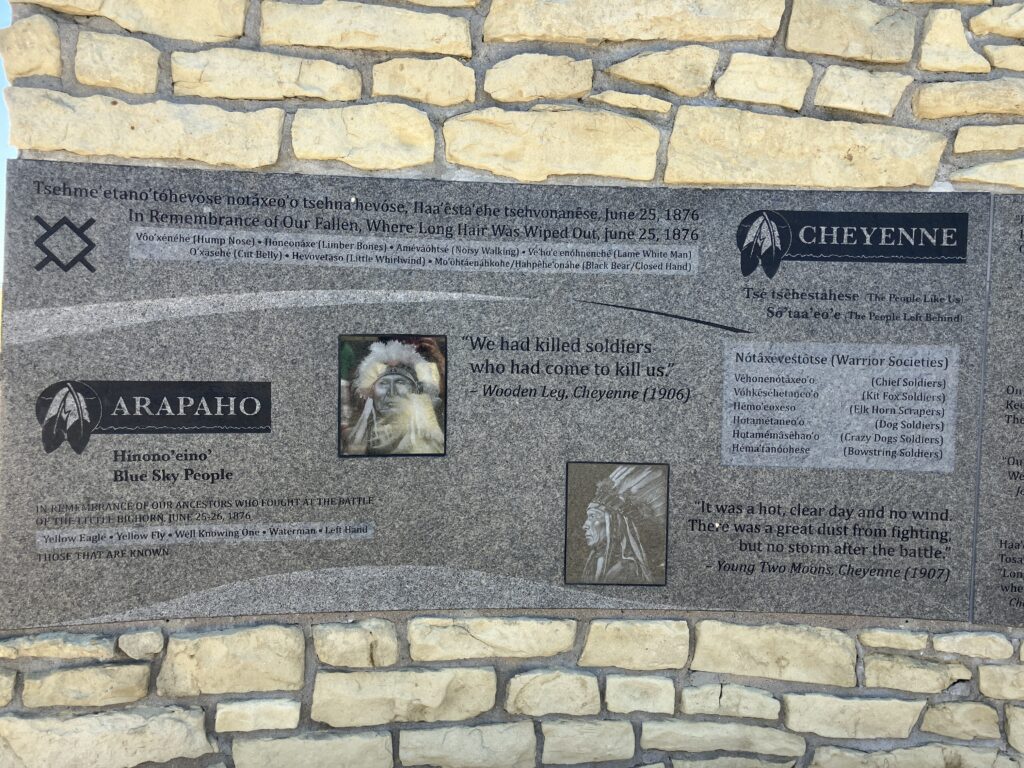

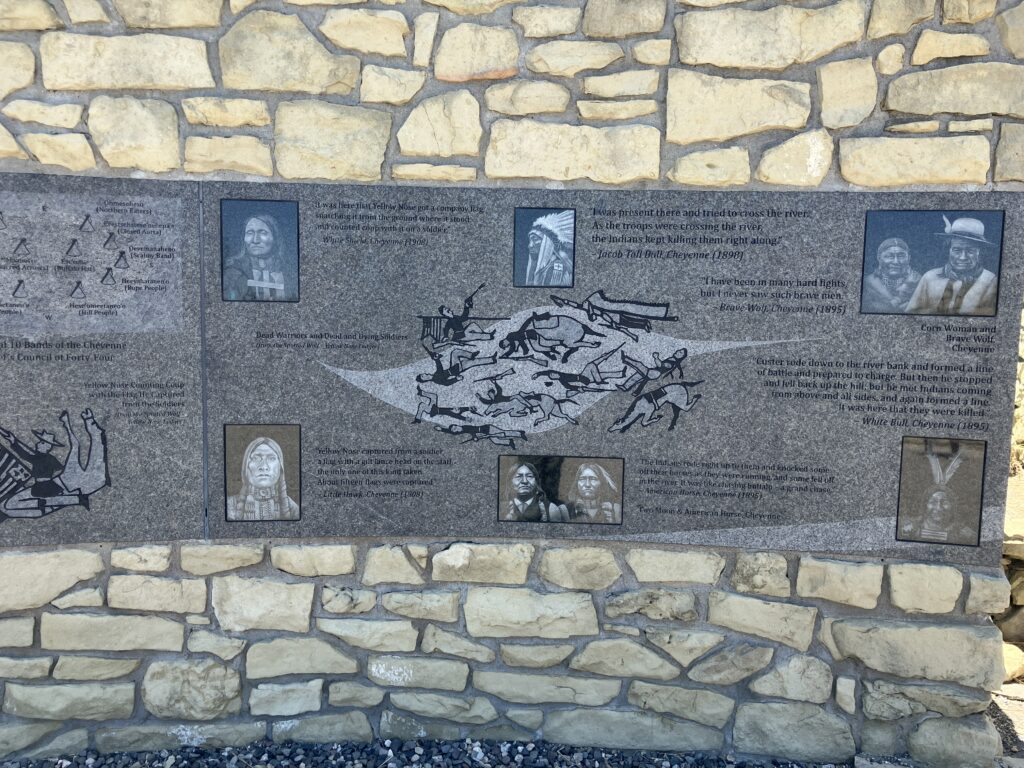



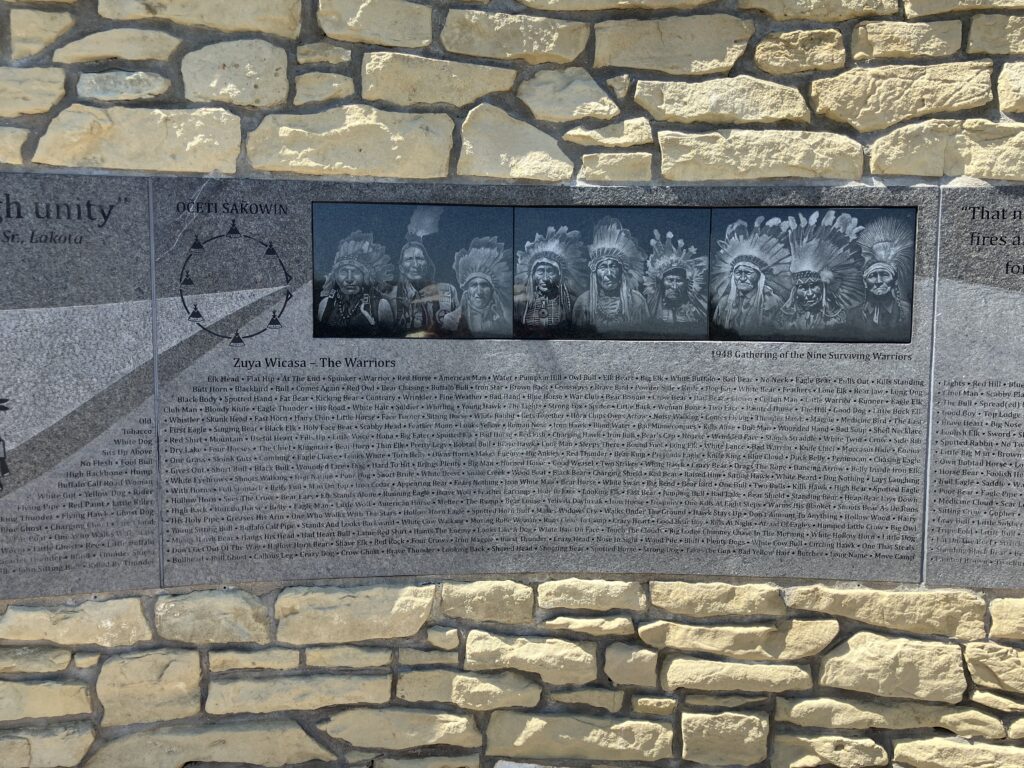

As the years past, the phrase “Peace through unity” became important. We missed the annual pow wow by a week.

In 1984, an excavation of the area provided additional information about what occurred and when.

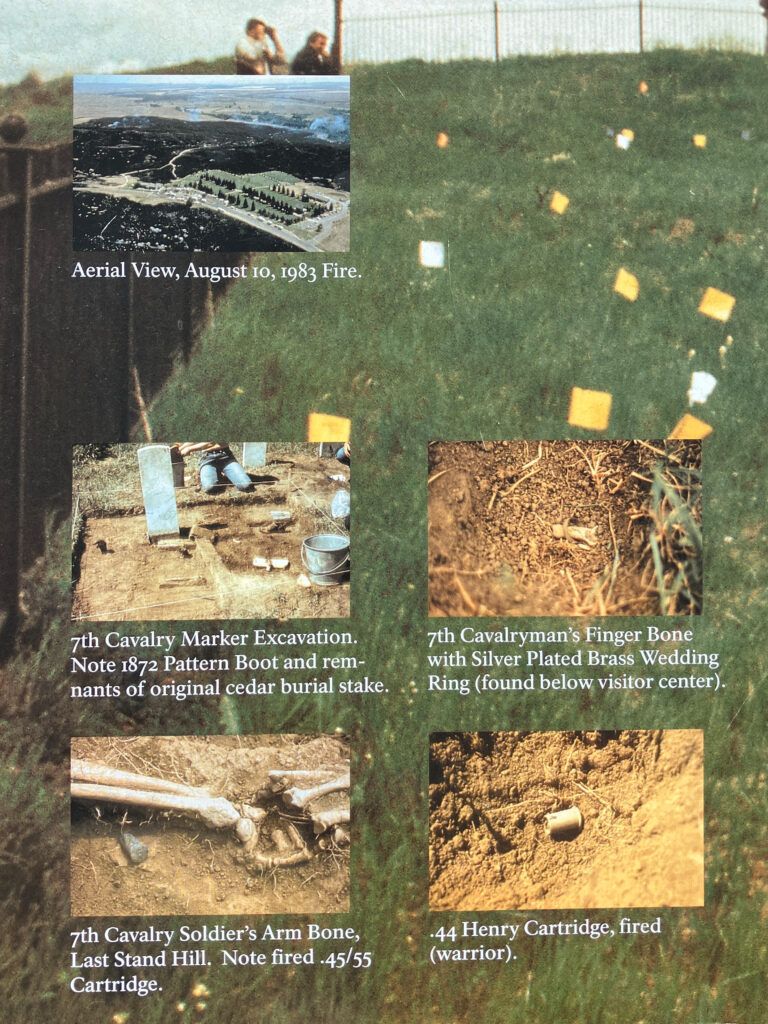
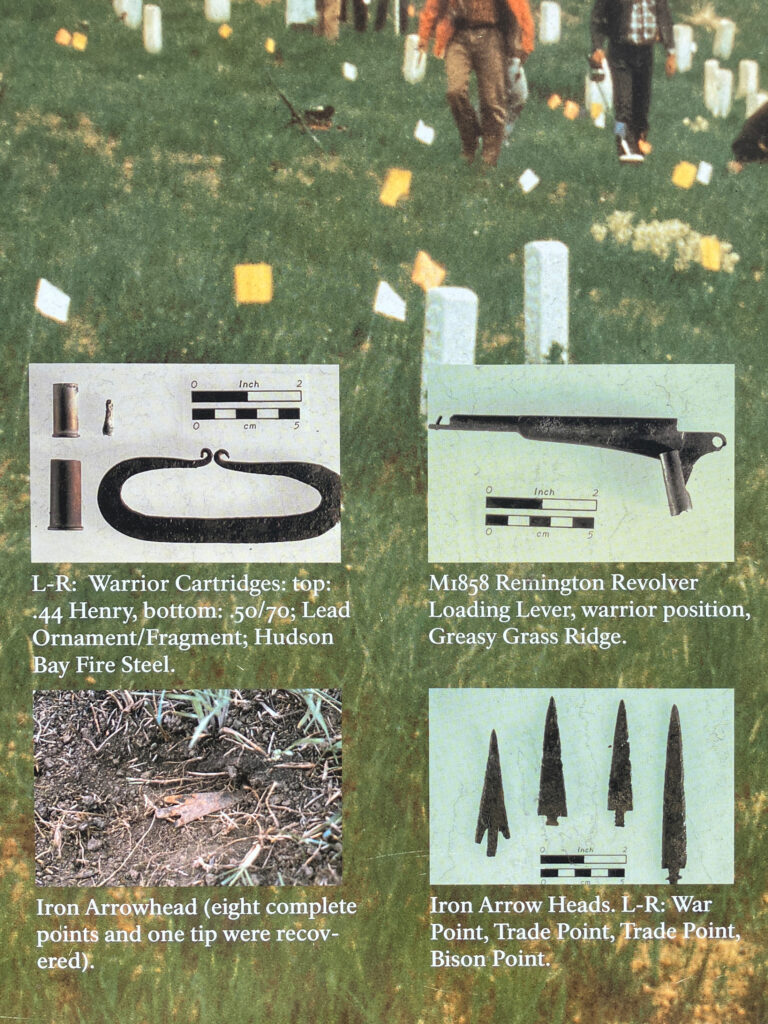

There are other signs throughout the park that provided a better understanding of what occurred or was believed to have occurred.
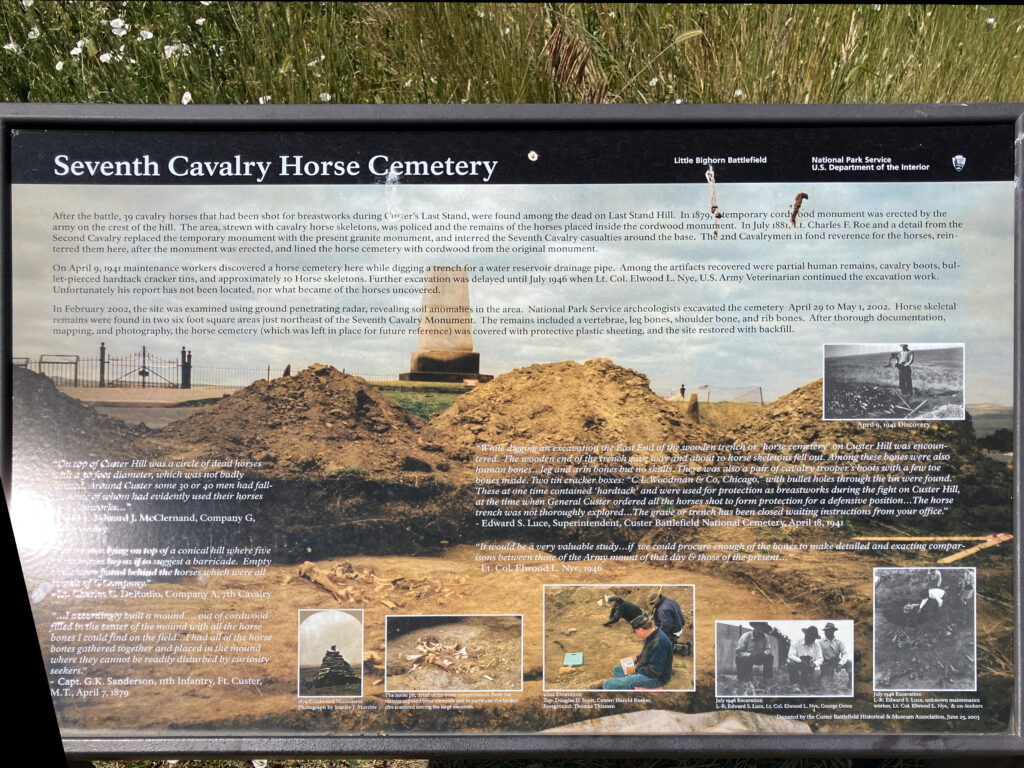
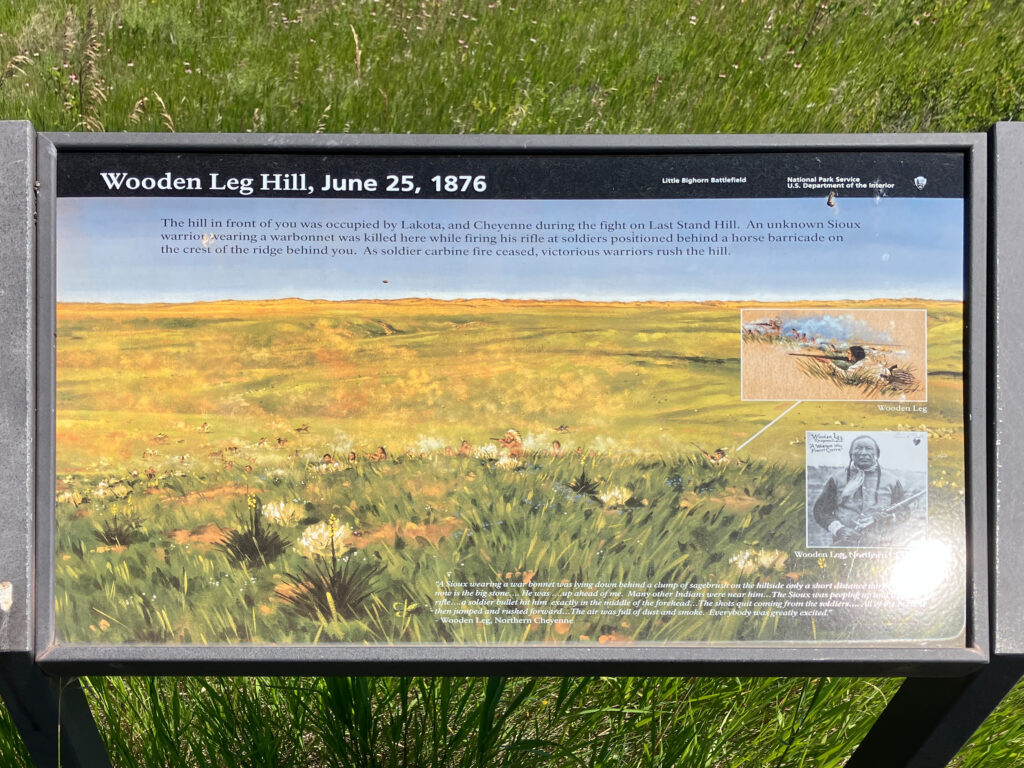
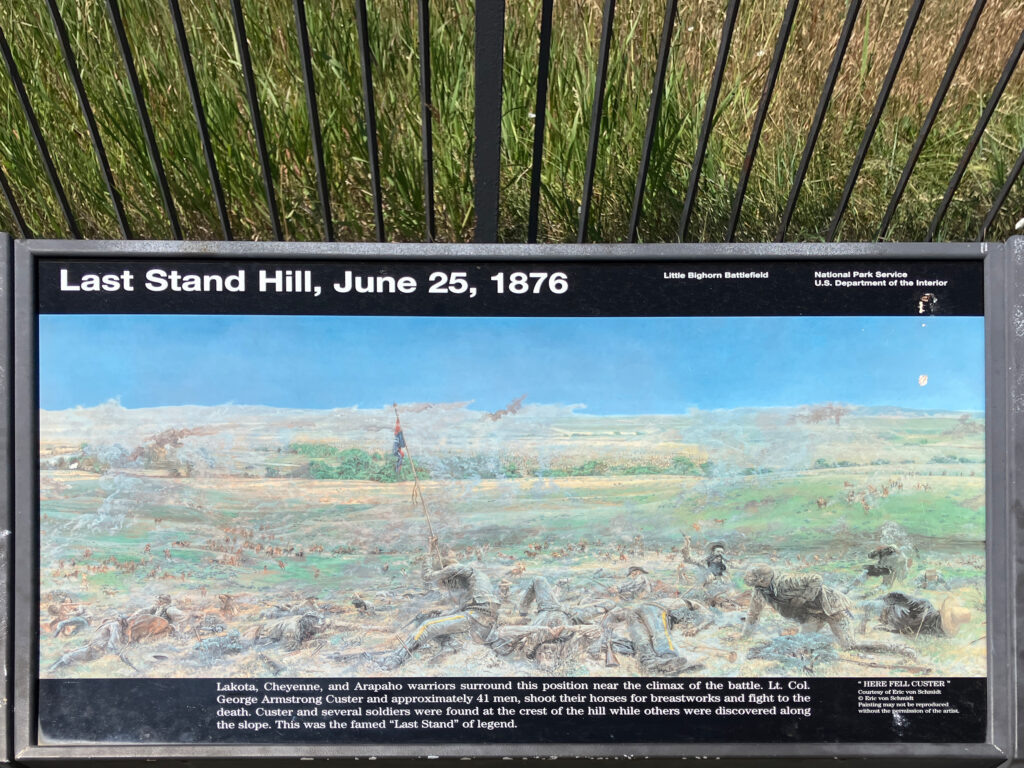
We would not have liked to be a horse in this battle; the soldiers just killed them to use as a barrier
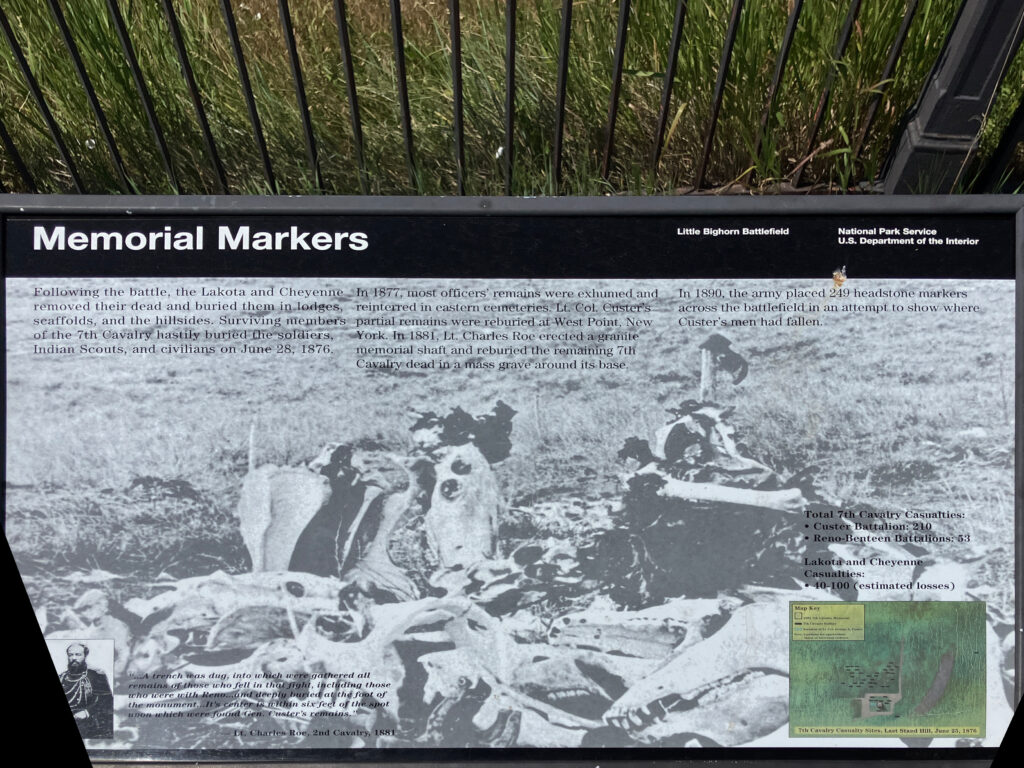
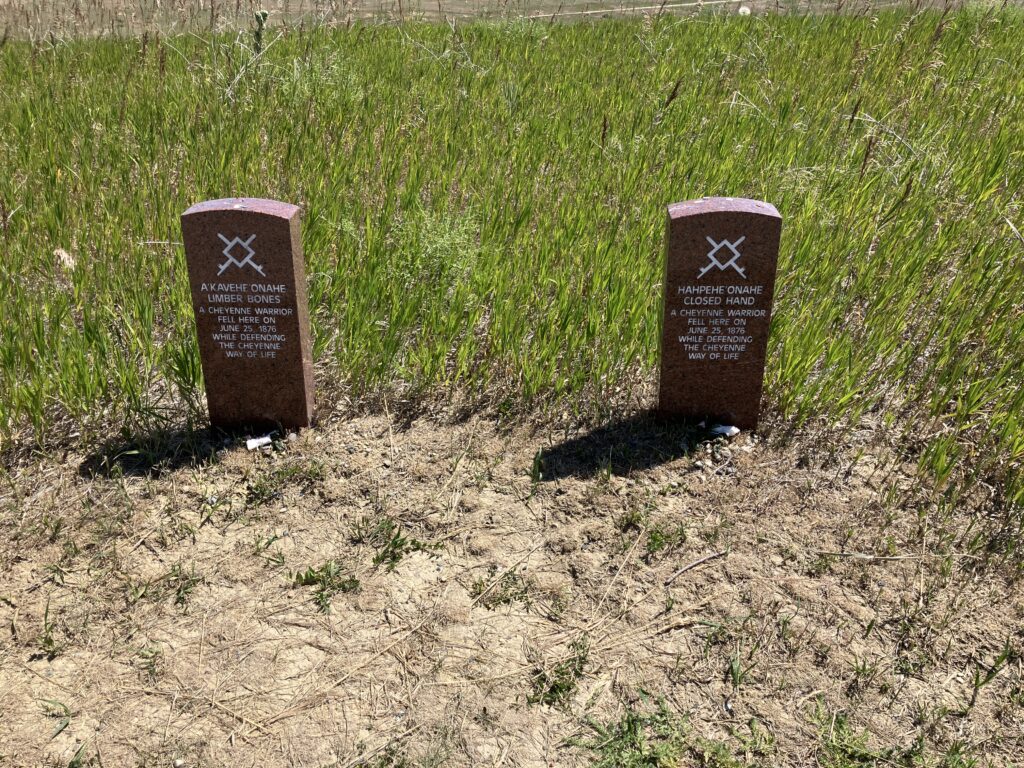
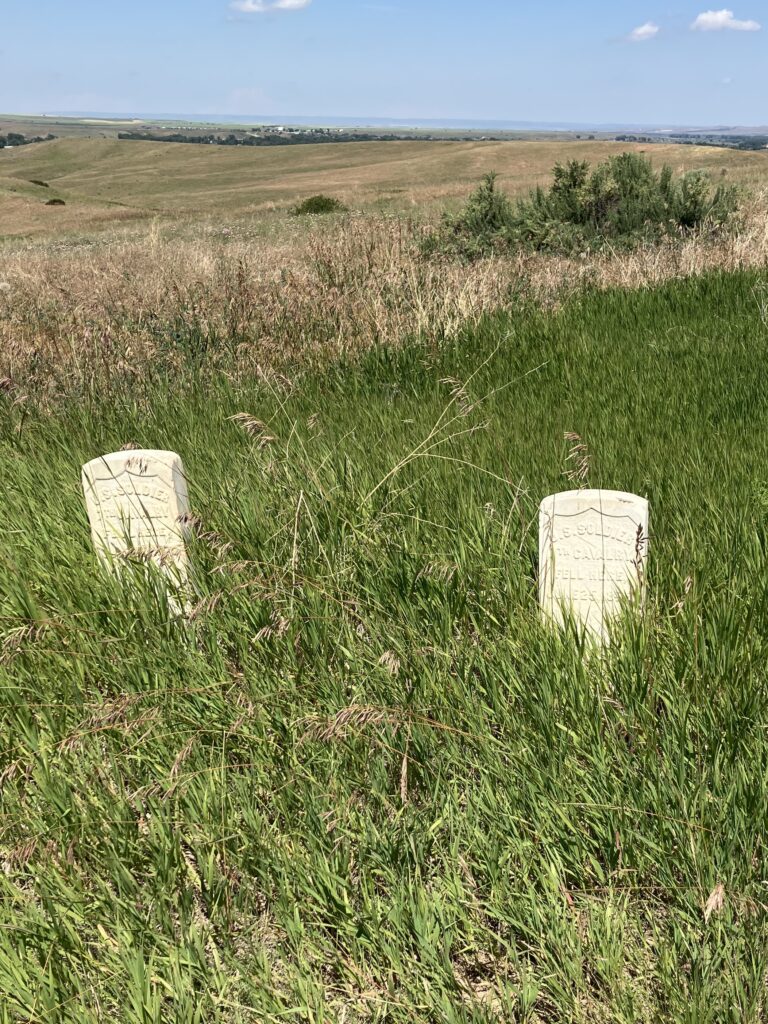
On the way back to the car, John saw two interesting birds, so he took some pictures with the 100-400mm lens. Unfortunately, it flew away before he made it back with the 200-800mm lens. The bird was in the shade, but a few pictures came out okay. The birds turned out to be Cedar Waxwings. We had heard of them, but we had not seen them before. They are not as brightly colored as Orioles and Tanagers, but they are still striking.
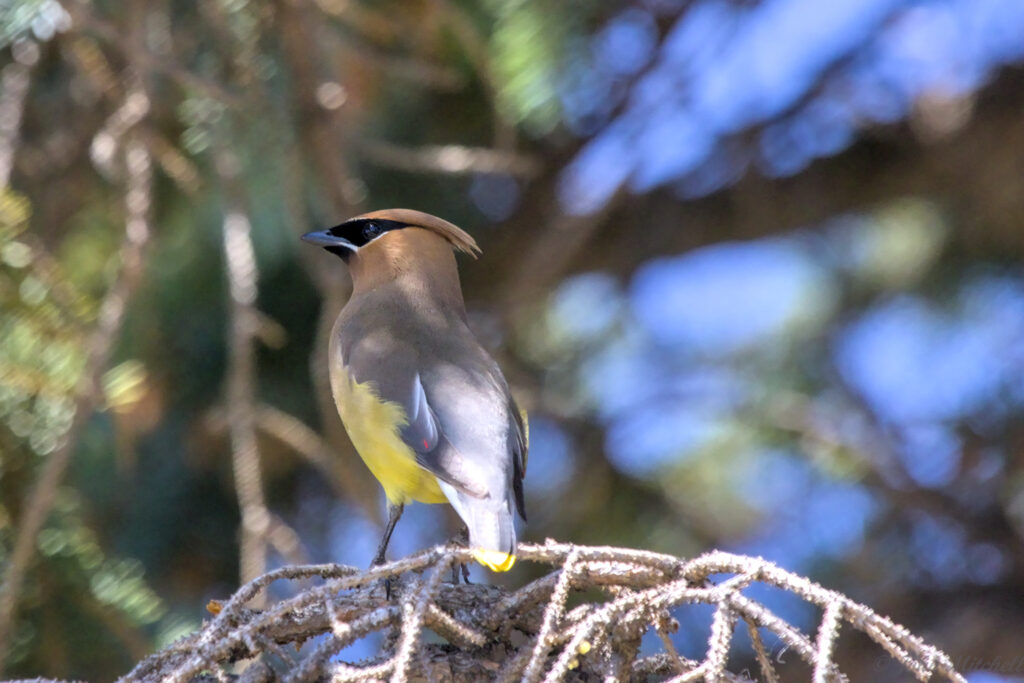
When we got back to the trailer, a bird started yelling at John, when he got out of the truck. After a quick look, he realized it was an Angry Bird. It looked like a juvenile Western Kingbird flew from the nest, but it was not ready to be on its own. It could also be a Yellow-throated Vireo. Whatever the species, it was mad about something.
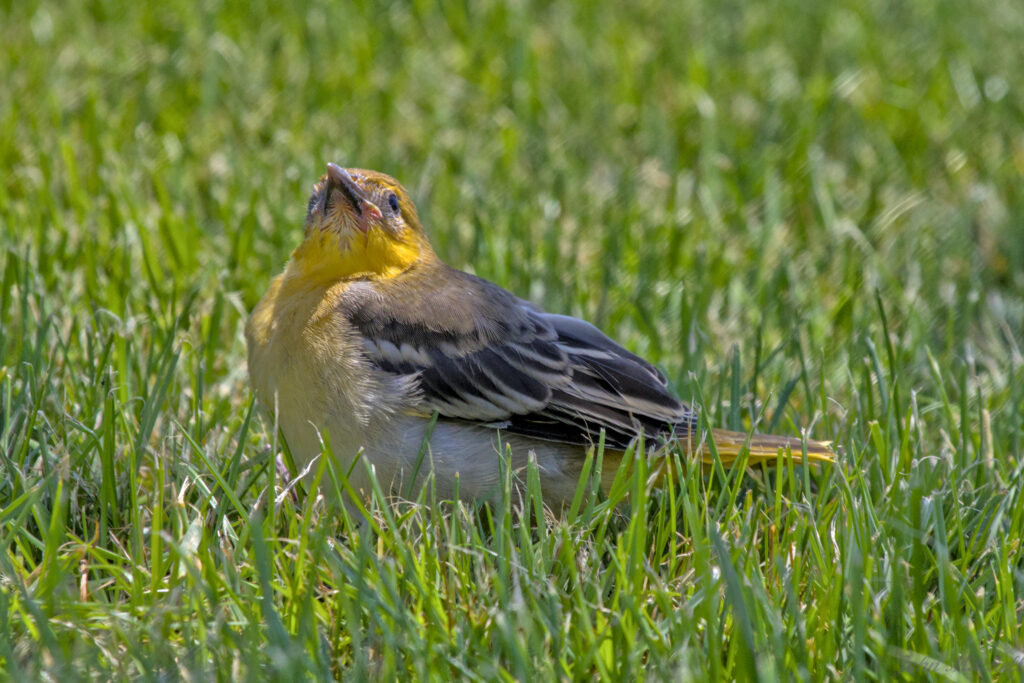
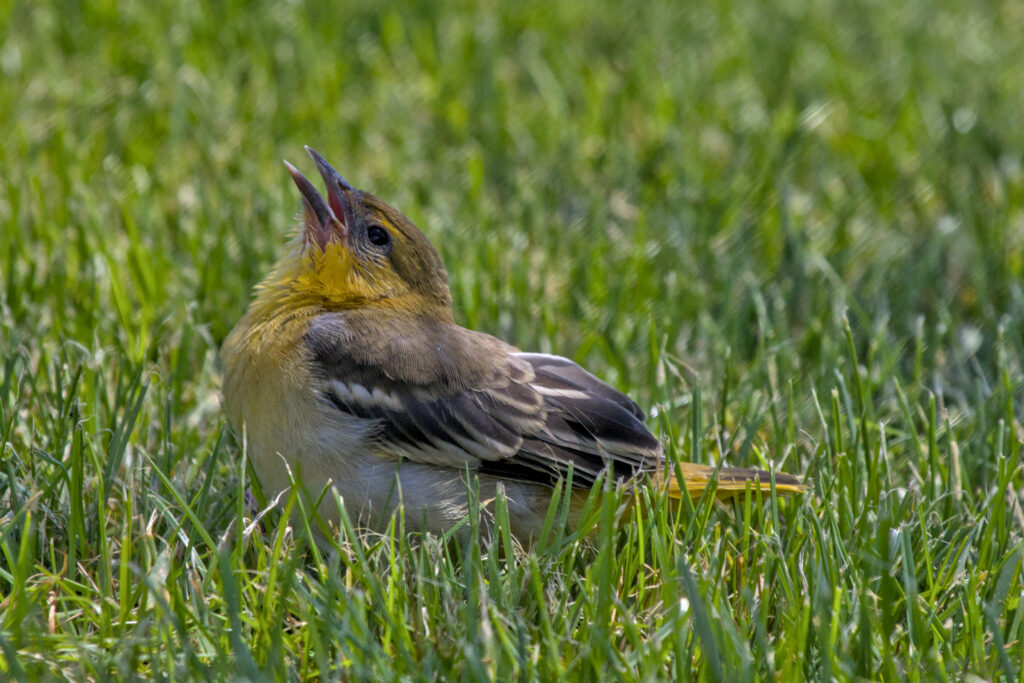
When danger is near, it absolutely refuses to sit still and shut up, so John does not have high hopes for its survival.
Uh oh, someone sounds delicious.
A post cannot be completed without at least 1 selfie. The background land is where the battle occurred.
